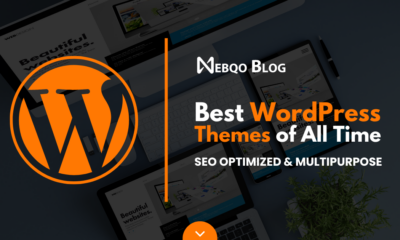MARKETING
The Ultimate Guide to An Effective Instagram Marketing Strategy

If you’ve read any of the statistics about the success of Instagram marketing, you’re likely looking for ways to get started. Instagram is an incredible marketing tool that can help you establish a brand identity, grow your customer base, and increase sales.
Before you jump in, it’s essential to create an effective Instagram marketing strategy, so you can experience the results everyone’s talking about.
Why Instagram Is Such an Important Platform for Your Business
With about two billion users, Instagram is a key social media platform for growing your brand and attracting new customers. If that’s not enough to get you to focus on the visual social media outlet, consider these statistics:
- According to their own data, 60% of people learn about products or services on Instagram. Users are open to being marketed to and have come to expect it. By marketing on Instagram, you’re putting your business in front of people who are curious about new products.
- Again according to Instagram, 90% of Instagrammers follow a business. Many users don’t mind seeing posts from businesses they’re interested in. They may even like it and follow brands they adore.
- 44% of people use Instagram to shop, according to the platform’s research. Features like shoppable posts and the ability to save payment information within the app is driving more people to shop on Instagram. You can take advantage of this by highlighting product features and offering discounts to new subscribers.
- Instagram’s advertising reach grew by almost 21% last year, compared to Facebook’s less than 7%. This amount varies by demographic, so it’s essential to understand your target audience before you map out your content strategy.
- The Instagram app is the second most downloaded app in the world, making Instagram marketing a good investment of your time and resources wherever you may be.
- Instagram beats Tiktok, Twitter, and Snapchat for number of users. If your goal is to reach the most people possible, Instagram is the way to go.
Benefits of an Instagram-Centered Marketing Strategy

A successful Instagram marketing strategy takes high investments of time and resources. So why should you center your marketing around Instagram and not another platform?
- Boosts Brand Awareness and Trust. Instagram gives you another place to interact with your target audience. If you take full advantage of it, you can establish your brand image and build trust in the eyes of your audience.
- Reaches the Right People. Instagram’s algorithm cross-references information about the content itself (captions, hashtags, and locations) with information about user engagement to show users more of what they’re interested in. If you utilize hashtags, location tags, reels, and stories correctly, Instagram’s algorithm will help get your business in front of the right people.
- Grows Product Sales. Instagram offers shoppable posts, product launch features, and the ability for users to save their payment information within the app. All of these features help to streamline the purchasing process and help you grow sales as a result.
- Fosters Customer Relationships. The ability to like, comment on, and share posts makes building customer relationships and a community around your product easy. These relationships help to build trust in your business and your products.
- Drives Higher Retention Rates. Instagram’s retention rate measures the percentage of viewers who watch your stories until the last segment. Retention rates are one of the most important metrics to consider when evaluating your reach. However, it takes lots of time and resources to foster good engagement with your content, so it’s important to be consistent and do frequent content audits to see what you can improve.
How to Create an Effective Instagram Marketing Strategy
Success in Instagram marketing means higher engagement rates, a bigger customer following, and increased sales. The following are best practices to help you see results.
Analyze Current and Past Data
Instagram Insights offers metrics that can help you evaluate the performance of your content. These include recent highlights, accounts reached, accounts engaged, and total followers. After reviewing this data, adjust your strategy as needed and release more content. It’s important to note that Instagram Insights is only available to business accounts, and you can only access it from the mobile app.

Identify Shortfalls
Take a look at underperforming content and compare it to your top-performing posts. Make adjustments as needed. Consider whether it’s to the structure of the content, the time of day released, or the type of hashtags used that you may need to alter.
If you’re starting from scratch, look at what your competitors are doing and think about what you’d like to do differently. How will your brand stand out?
Set Realistic Goals
While it can be tempting to set lofty goals for your business, it’s better to start with small, manageable goals and build out from there. These goals should include the number of posts a week, response time for inquiries, number of likes or shares, and more. When setting your goals, think: What do you want from Instagram, and how can you best accomplish it?

Are You Ready to Master Social Media?
Become a Certified Social Media Specialist and learn the newest strategies (by social platform) to draw organic traffic to your social media sites.
Research Successful Competitors
As with any other marketing strategy, you must know what your competitors are doing. Look at what your competitors do well and determine how to do it better or position yourself differently. Highlight what makes your brand different from your competitors and effectively communicate that to your audience.
Plan Your Posts
You obviously don’t need to know everything you’re going to post just to get started. But it’s good to have an idea of some of the content types you plan to use. When determining your content, consider:
- Content Pillars. Content pillars help make up the foundation of your content strategy. The different types include behind-the-scenes content, user-generated content, product demos, culture-focused (showing the human side of your company), and customer stories. Your content pillars contribute to your brand image, so it’s important to consider what you want it to be when planning your content.
- Generate a Style Guide. A style guide helps ensure consistency in the look of your Instagram posts and gives users an idea of what to expect. It should include composition, color palette, fonts, filters, captions, and hashtags.
- Content Formats. Instagram offers reels, IG Live, stories, and visual-based posts as options for sharing content. Each of these has its own benefits, so consider your campaign’s goals and how you can mix the formats to accomplish them.
Utilize a Content Calendar
Consistent posting is vital to a successful Instagram marketing campaign. Content calendars can help you plan what type of content to share and when. Then you can create content for a month or more at a time and schedule it with a social scheduling tool like Buffer or Hootsuite.

Best Practices to Follow for Your Instagram Strategy
Remember some best practices to see the best results from your Instagram marketing strategy. These gold standard approaches include:
- Define Your Audience. The more you know about your audience, the better. Once you define your audience, be sure everything you post focuses on them.
- Solve Customer Problems or Address Needs. Users are more likely to interact with your content and follow you if they believe your profile solves their needs. Make sure to consider their needs and desires as you start producing content.
- Create a Clear Brand Image. This visual style contributes to brand awareness and associations. What do you want your customers to think of when they see your content? What are things you don’t want your brand associated with?
- Prioritize Engagement. Engaging with your audience and similar brands helps drive conversations about your products. It also helps to develop trust in your business.
- Post Actively. To get the most out of Instagram, you’ll probably want to post daily. Try out various times to determine when your audience is most responsive to your posts.
- Leverage the Professional Dashboard. This dashboard is Instagram’s central destination to track performance, utilize professional tools, and explore educational information. When used to its full potential, it can help you track your performance, grow your business, and stay informed.
- Optimize Your Profile. You can optimize your profile in various ways, including incorporating a keyword into your name or username, writing a clear and concise bio, and displaying a profile pic that best represents your brand.
Use Proven Keywords for Hashtags. Hashtags are searchable keywords that help users connect with content they’re interested in. Using them in captions on your reels, stories, and posts can help increase your visibility and grow your audience.
MARKETING
Quiet Quitting vs. Setting Healthy Boundaries: Where’s The Line?

MARKETING
Microsoft unveils a new small language model

Phi-3-Mini is the first in a family of small language models Microsoft plans to release over the coming weeks. Phi-3-Small and Phi-3-Medium are in the works. In contrast to large language models like OpenAI’s ChatGPT and Google’s Gemini, small language models are trained on much smaller datasets and are said to be much more affordable for users.
We are excited to introduce Phi-3, a family of open AI models developed by Microsoft. Phi-3 models are the most capable and cost-effective small language models (SLMs) available, outperforming models of the same size and next size up across a variety of language, reasoning, coding and math benchmarks.
What are they for? For one thing, the reduced size of this language model may make it suitable to run locally, for example as an app on a smartphone. Something the size of ChatGPT lives in the cloud and requires an internet connection for access.
While ChatGPT is said to have over a trillion parameters, Phi-3-Mini has only 3.8 billion. Sanjeev Bora, who works with genAI in the healthcare space, writes: “The number of parameters in a model usually dictates its size and complexity. Larger models with more parameters are generally more capable but come at the cost of increased computational requirements. The choice of size often depends on the specific problem being addressed.”
Phi-3-Mini was trained on a relatively small dataset of 3.3 trillion tokens — instances of human language expressed numerically. But that’s still a lot of tokens.
Why we care. While it is generally reported, and confirmed by Microsoft, that these SLMs will be much more affordable than the big LLMs, it’s hard to find exact details on the pricing. Nevertheless, taking the promise at face-value, one can imagine a democratization of genAI, making it available to very small businesses and sole proprietors.
We need to see what these models can do in practice, but it’s plausible that use cases like writing a marketing newsletter, coming up with email subject lines or drafting social media posts just don’t require the gigantic power of a LLM.
Dig deeper: How a non-profit farmers market is leveraging AI
MARKETING
Navigating the Video Marketing Maze: Short-Form vs. Long-Form
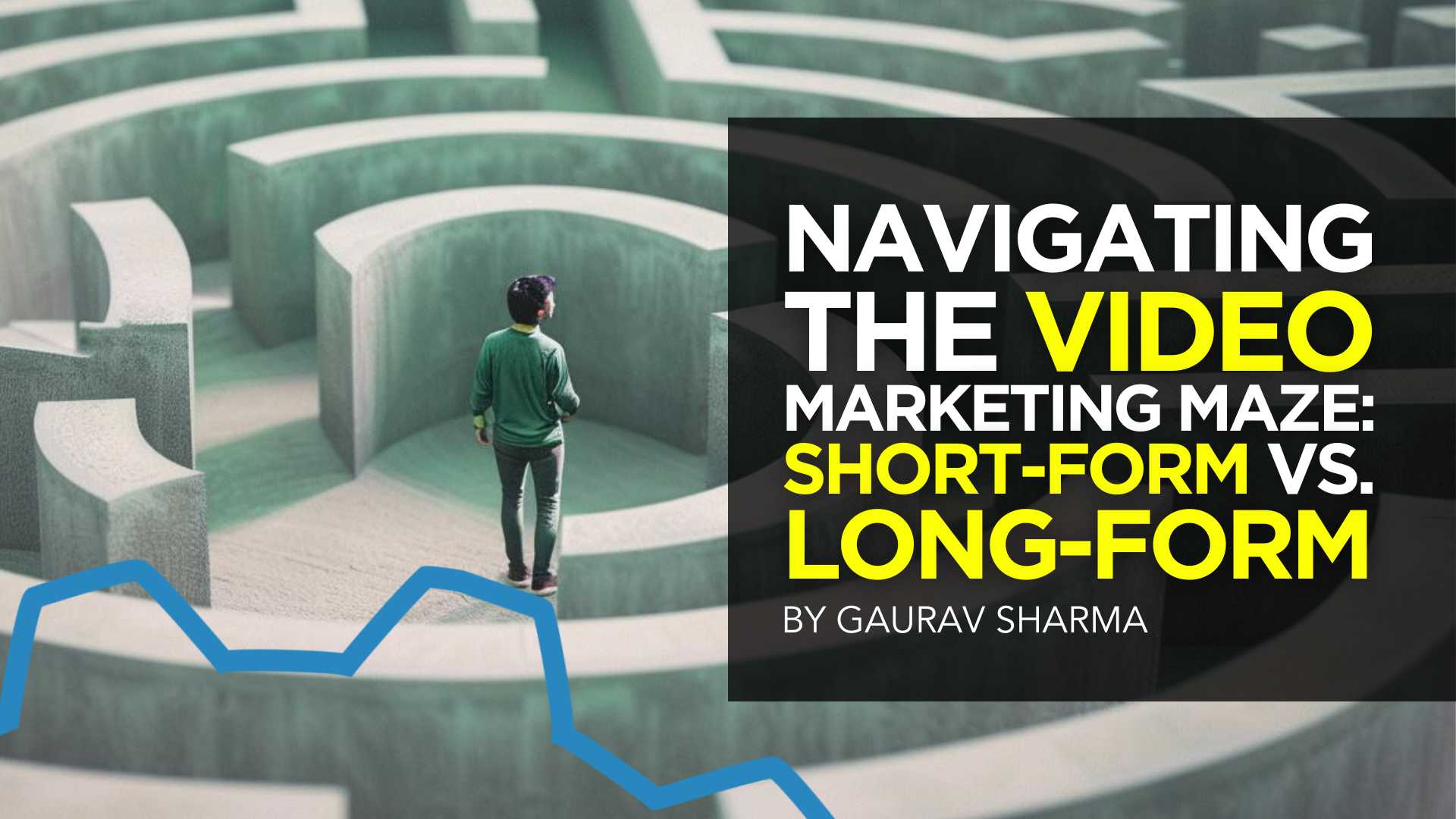

Are you torn between using long-form or short-form videos for your small business marketing campaign? Well, you are not alone. Despite 89% of consumers wanting to see more brand videos, there is no one-size-fits-all answer about the ideal video length.
However, this should not deter you from creating an effective video strategy. In 2023, people watched an average of 17 videos per day, highlighting the influence of video content in today’s digital landscape.
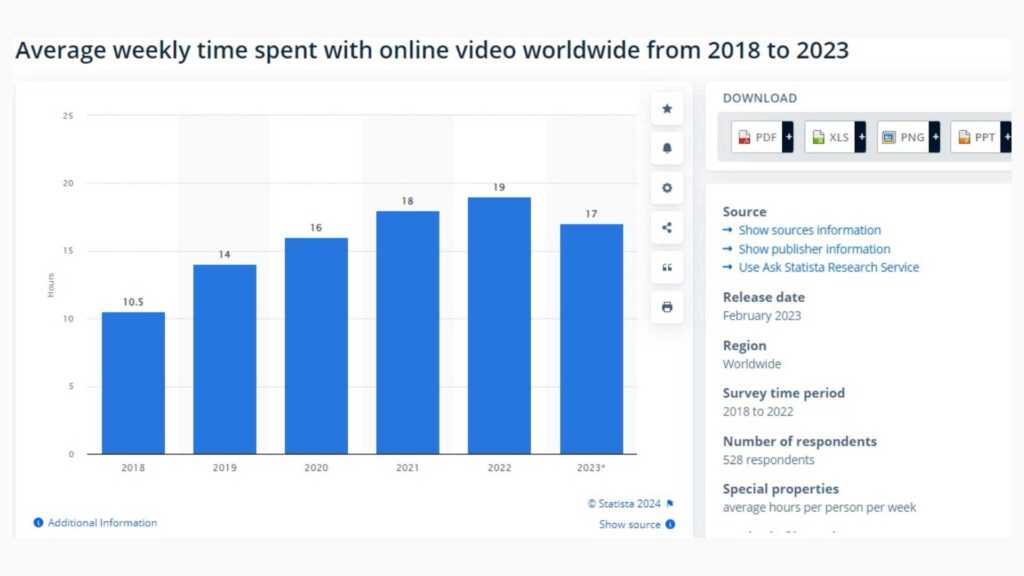

Both short-form and long-form videos offer unique advantages and come with their set of challenges. Join me as I uncover the benefits and limitations of each video format to help you make informed marketing decisions.
What are Short-Form Videos?
Short videos typically range from 30 seconds to less than 10 minutes long. They are popular on social media platforms like TikTok, Instagram, Snapchat, and YouTube.
Short-form videos deliver brief yet engaging messages that quickly capture the viewer’s attention. Here are some popular types of short-form video content.
- TikTok Challenges
- Instagram Reels
- Snapchat Stories
- YouTube Shorts
- Twitter Video Ads
Benefits of Short-Form Videos
A previously cited report shows that 39% of marketers find short-form videos, ranging from 30-60 seconds long, more successful. The same study reports that 44% of customers prefer watching a short video to learn about a brand’s offerings.
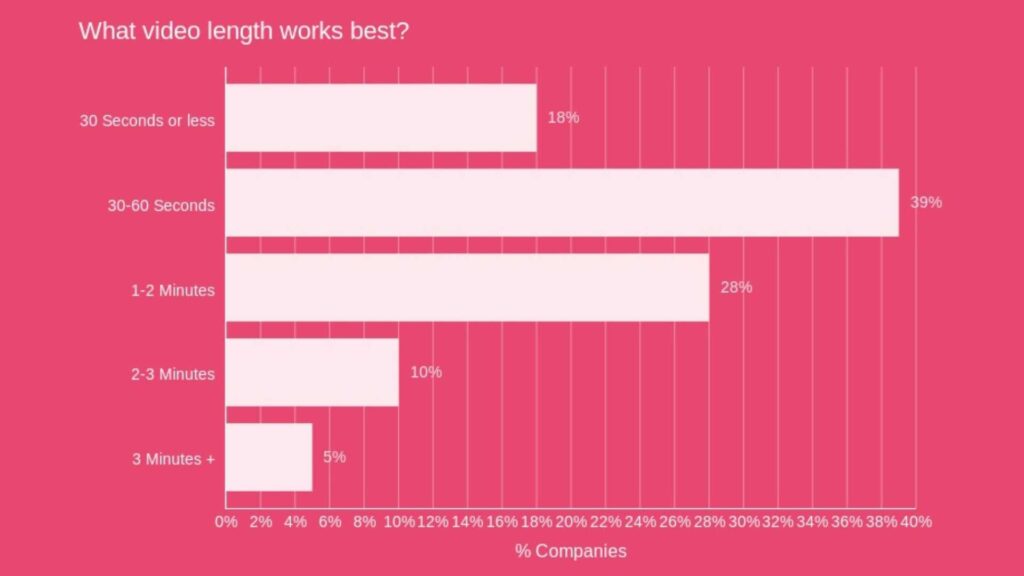

So, it is evident that short-form videos have their benefits. Let’s take a closer look at some of them.
Attention-Grabbing
Short-form videos capture attention quickly, making them ideal for the fast-scrolling nature of social media platforms. Your audience is more likely to watch them in their entirety compared to longer content.
Cost-Effective Production
Creating short-form videos requires less time and resources compared to longer videos. As a small business owner with a limited budget, using short-form videos can be cost-effective.
Increased Engagement
Short-form videos engage viewers due to their crisp and concise nature. This results in more likes, comments, and shares that boost your content’s visibility and increase brand awareness.
Integrating short-form videos into your influencer marketing campaigns can further amplify your reach to new and diverse audiences.
Highly Shareable
Short videos are highly shareable. This makes it more likely for your viewers to share them, increasing their virality.
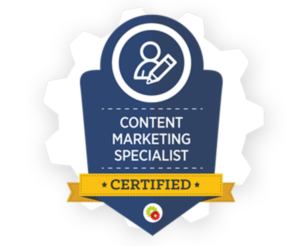

Want to get certified in Content Marketing?
Leverage the tools and channels to predictably and profitably drive awareness, leads, sales, and referrals—EVERYTHING you need to know to become a true master of digital marketing. Click Here
There are multiple benefits of adding video to your website including increased engagement, improved SEO, and enhanced user experience.
Limitations of Short-Form Videos
While short-form videos offer many advantages in content marketing, they also present some challenges.
Limited Message Depth
Due to their brief duration, short-form videos may struggle to convey complex or detailed messages. Longer videos might be more suitable if you need to communicate intricate information.
Competition for Attention
Standing out on platforms flooded with short-form video content can be challenging. You must create content that stands out to avoid becoming lost in the sea of other videos.
Shorter Lifespan
Short videos may lose their relevance with time. They can quickly get buried in users’ feeds, leading to a shorter visibility and engagement period than longer, evergreen content.
This means you must consistently create short-form videos to maintain audience interest over time.
Limited SEO Impact
Short-form videos may be more challenging to optimize for search engines than longer, more keyword-rich content. This can affect the discoverability of your content outside the social media scene.
What are Long-Form Videos?
Long-form videos are typically longer, ranging from a few minutes to several hours. They extend beyond a few minutes to several hours, providing ample time for in-depth topic exploration and detailed content.
These videos are particularly suitable for educational content, product demonstrations, and narrative-driven storytelling. Long-form videos are common on platforms like YouTube and Vimeo. Common types of long-form video content include:
- YouTube Series
- Webinars
- Educational Tutorials and Courses:
- Behind-the-Scenes Content
- Interviews and Conversations
Advantages of Long-Form Videos
Long-form video content is the fastest-growing segment, with videos above 30 minutes experiencing tremendous growth over the years. Let’s explore some of the benefits behind this growth.
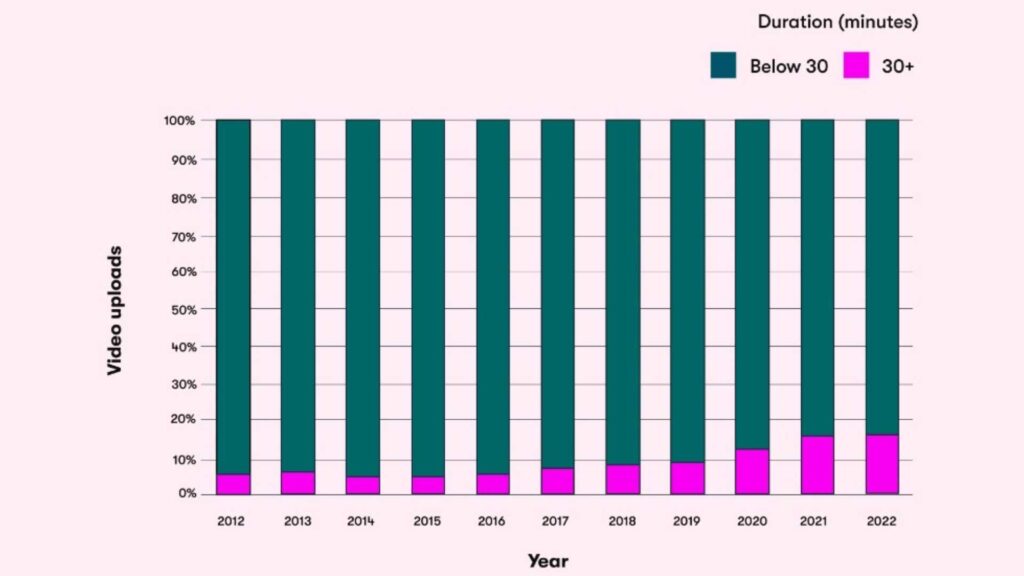

Establishes Expertise and Credibility
Long-form videos allow you to provide in-depth information about various subjects, establishing your brand as an authority. Potential customers will likely trust and rely on your insights when you consistently deliver valuable content.
Builds Strong Audience Connections
The more your audience watches your videos, the more they become familiar with your content and brand. This consistent engagement promotes trust and loyalty, helping you create deeper connections with your audience.
Provide SEO Optimization Opportunities
Long-form videos keep your audience engaged for a longer duration than short ones. This signals search engines that your content provides value, resulting in higher rankings and increased visibility.
Besides, these videos provide opportunities to optimize for relevant keywords. This Attrock guide offers more insights into the value of SEO for your small business.
They Are Sustainable
Unlike short videos, well-produced and valuable long-form videos have an extended shelf life. They can continue to attract views and engagement over an extended period, contributing to a sustainable content strategy.
Instagram reels are also a part of short videos and you can get benefits from this platform by integrating it with your website. You can learn how to embed Instagram Reels on websites and get extra benefits from your Reels.
Drawbacks of Long-Form Videos
Despite their benefits, long-form videos also have certain limitations, including:
Attention Span Challenges
Between distractions, juggling tasks, and information overload, user attention span quickly diminishes. Viewers may lose interest and disengage from your long video before its conclusion.
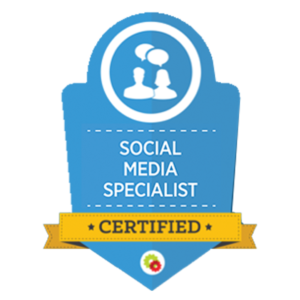

Are You Ready to Master Social Media?
Become a Certified Social Media Specialist and learn the newest strategies (by social platform) to draw organic traffic to your social media sites.
Complex Production Process
Creating high-quality long-form videos requires more resources, including time, equipment, and skilled personnel. This can be disadvantageous, especially for small businesses with limited budgets.
Platform Limitations
Some social media platforms and video hosting sites may limit video length, making it challenging to distribute long-form video content. You may then be forced to repurpose your content to suit various platforms.
Short-Form or Long-Form Videos: Which Are Better?
Now that you know the benefits and limitations of each format, which one should you choose? Short-form or long-form videos?
Well, it all boils down to considering several factors, such as:
Content Objectives
What do you want to achieve from your video marketing campaign? Short-form videos are highly effective for quick brand exposure and generating buzz. Long-form videos, on the other hand, contribute to a more in-depth understanding of the brand.
Target Audience Preferences
Audiences with short attention spans likely prefer short-form videos, while long-form videos appeal to those seeking a more immersive experience.
Similarly, short-form videos may appeal more to younger audiences, while older demographics may prefer the depth of long-form content.
Platform Dynamics
Various platforms support different content formats. Short-form videos are well-suited for platforms like TikTok, Instagram, and Snapchat. On the other hand, platforms like YouTube and Vimeo are better for hosting longer videos.
Industry Type
Short-form videos would be ideal if your industry thrives on trends, entertainment, and quick messages. However, long-form videos are effective for industries requiring in-depth explanations or educational content.
Bottom Line
Ultimately, choosing short-form or long-form videos depends on your business’s specific needs and goals. Since both formats have advantages and limitations, making a choice may prove difficult.
However, it doesn’t have to be an uphill task. The key lies in recognizing when to incorporate each video format into your marketing strategy. Understanding your audience and its needs allows you to combine both formats strategically, maximizing the benefits of each.
Continuously analyze performance metrics and adapt your video marketing strategy accordingly to ensure optimal engagement and conversion rates.
-

 PPC7 days ago
PPC7 days ago10 Most Effective Franchise Marketing Strategies
-

 MARKETING5 days ago
MARKETING5 days agoEffective Communication in Business as a Crisis Management Strategy
-

 SEARCHENGINES6 days ago
SEARCHENGINES6 days agoGoogle Won’t Change The 301 Signals For Ranking & SEO
-

 SEARCHENGINES7 days ago
SEARCHENGINES7 days agoGoogle Again Says Ignore Link Spam Especially To 404 Pages
-

 SEO5 days ago
SEO5 days agobrightonSEO Live Blog
-

 PPC6 days ago
PPC6 days ago9 Ecommerce Trends to Boost Your Business in 2024
-

 SEO7 days ago
SEO7 days agoMeasuring Content Impact Across The Customer Journey
-

 SEO6 days ago
SEO6 days agoHow To Write ChatGPT Prompts To Get The Best Results













